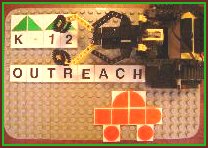____________________________________________________________________________________________________________________________________________________________________________________________________________________________________________________________________________________________________________________________________________________________________________________________________________
Canada and United States
We decorate a pine tree with ornaments representing Christmas, buy
or make each other presents that get wrapped in wrapping paper to be put
under the tree so they can be opened on Christmas Day. Santa Claus is the
person that who brings the presents. You aren't supposed to know what you're
going to get, so that is part of the fun of Christmas Day. On Christmas
Eve, December 24th, there is usually a turkey dinner and in the middle
of the night, Santa Claus is said to come down the chimney and place the
presents under the tree. Then he goes back up the chimney (he's magic)
and flies to the next house in his sleigh with 9 reindeer pulling it through
the air (it flies). On Christmas Day, all the presents are opened.
Germany
In Germany there are many different characters for Christmas. Nikolaus
comes on December 5th and on December 24th when the actual opening of the
gifts is happening, they have been brought either by Knecht Ruprecht, Weihnachtsmann,
or the Christkindl, (Christ child) which is an angelic child dressed in
a white and or golden dress much like a long nightgown. It has wings, and
has usually a small horse or a donkey as a companion.
Romania
The tradition in Romania is for children to travel from house to house
singing carols and reciting poetry and legends throughout the Christmas
season. The leader carries a large wooden star called a steaua, which is
covered with shiny paper and decorated with bells and colored ribbon. A
picture of the Holy Family is pasted in the star's center, and the entire
creation is attached to a broomstick or stout pole.
Mexico
Several weeks before Christmas, elaborately decorated market stalls
or puestos are set up in the plazas of every town and city. Some people
travel for days from remote areas to get to these markets. The puestos
offer crafts of every conceivable kind, foods such as cheese, bananas,
nuts, and cookies, and flowers such as orchids and poinsettias.
The poinsettia is native to Mexico and is believed to have first been
used in connection with Christmas in the 17th century when Mexican Franciscans
included the flowers in their Christmas celebration. There is a legend
connected with the flower. A little boy named Pablo was walking to the
church in his village to visit the Nativity scene, when he realized he
had nothing to offer the Christ Child. He saw some green branches growing
along the roadside and gathered them up. Other children scoffed, but when
he laid them by the manger, a brilliant red star-shaped flower appeared
on each branch.
Finland
When visiting Finland, Santa leaves his sleigh behind and rides on
a goat named Ukko. Finnish folklore has it that Ukko is made of straw,
but is strong enough to carry Santa Claus anyway.
Denmark
The Christmas feast, in Denmark, is celebrated at midnight Christmas
Eve. Everyone looks forward to dessert when a special rice pudding is served
in which a single almond is hidden. Whoever finds the almond will have
good luck for the coming year.
The jolly bringer of gifts is known as Julemanden and arrives in a
sleigh drawn by reindeer, a sack over his back. He is assisted with his
Yuletide chores by elves called Juul Nisse, who are said to live in attics.
Children leave out saucers of milk or rice pudding for them and are delighted
to find the food gone on Christmas morning.
Japan
In Japan there is a god or priest known as Hoteiosho, who closely resembles
our Santa Claus. He is always pictured as a kind old man carrying a huge
pack. He is thought to have eyes in the back of his head. It is well for
the children to be good when this all-seeing gentleman is abroad.
New Year's Day is the most important day of the whole calendar in Japan.
On New Year's Eve the houses are cleaned thoroughly from top to bottom,
and are decorated for the morrow. When everything has been made clean and
neat the people of the house dress themselves in their finest clothes.
Then the father of the household marches through the house, followed by
all the family, and drives the evil spirits out. He throws dried beans
into every corner bidding the evil spirits withdraw and good luck enter.
Scandinavian Countries
It is from Scandinavia that most of our yule log traditions derive.
The dark cold winters inspired the development of traditions concerned
with warmth and light. Yuletide, meaning "the turning of the sun" or the
winter solstice, has traditionally been a time of extreme importance in
Scandinavia - a time when fortunes for the coming year were determined
and when the dead were thought to walk the earth. For a long time, it was
considered dangerous to sleep alone on Christmas Eve. The extended family,
master and servant, alike would sleep together on a freshly spread bed
of straw.
The Yule log was originally an entire tree, carefully chosen, and brought
into the house with great ceremony. The butt end would be place into the
hearth while the rest of the tree stuck out into the room. The tree would
be slowly fed into the fire and the entire process was carefully timed
to last the entire Yule season.
Iran
Iran, formerly Persia, is the land where the Three Wise men are believed
to have lived when Jesus was born. Today Christians in Iran begin fasting
from animal products on December 1. This is called "Little Fast." "Big
Fast" occurs during Lent, the six weeks preceding Easter. After Church
service of December 25 they enjoy Christmas dinner which they call "Little
Feast." A traditional dish is a chicken stew called harasa. Gifts are generally
not exchanged but children get new clothes which they wear proudly on Christmas
Day.
Czech Republic
Centuries ago, the western half of Czechoslovakia was known as Bohemia.
This was the 10th century home of Good King Wenceslaus, the main character
in the familiar English Christmas carol. It is said that English troops,
fighting in Bohemia hundreds of years later, brought the song home with
them.
In Czechoslovakia, St. Nicholas is called Svaty Mikalas and is believed
to climb to earth down from heaven on a golden rope along with his companions:
an angel and a whip-carrying devil.
An ancient tradition shared by Czechoslovakia and Poland involves cutting
a branch from a cherry tree putting it in water indoors to bloom. If the
bloom opens in time for Christmas it is considered good luck, and also
a sign that the winter may be short. The hope of early spring helps keep
spirits up during the long dark winter.
China
Christians in China celebrate by lighting their houses with beautiful
paper lanterns and decorating their Christmas trees, which they call "Trees
of Light," with paper chains, paper flowers, and paper lanterns. Chinese
Children hang muslin stockings and await a visit from Santa Claus, "Christmas
Old Man.".
The main winter festival in China is the Chinese New Year which takes
place toward the end of January. That means they do not follow the same
traditions as in Western cultures like sending Christmas cards or going
to church. Now officially called the "Spring Festival," it is a time
when children receive new clothing, eat luxurious meals, receive new toys,
and enjoy firecracker displays. An important aspect of the New Year celebration
is the worship of ancestors. Portraits and paintings of ancestors are brought
out and hung in the main room of the home.
Poland
In Poland, an elaborate tradition called Wigilia is celebrated. Beginning
on Christmas Eve, a strict 24-hour fast is observed which ends with a huge
Christmas feast. In honor of the star of Bethlehem, the meal cannot begin
until the first star of night appears. Though Christmas is Poland is officially
known as Bozz Narodzenie, it is most often referred to as Gwiazdka, which
means "little star." Once the star appears, a special rice wafer blessed
by the parish priest called oplatek, is broken into pieces and shared by
all. Finally the meal can begin. The feast consists of twelve courses,
one for each Apostle. The table is always set with one extra seat in case
a stranger or the Holy Spirit should appear to share the meal.

